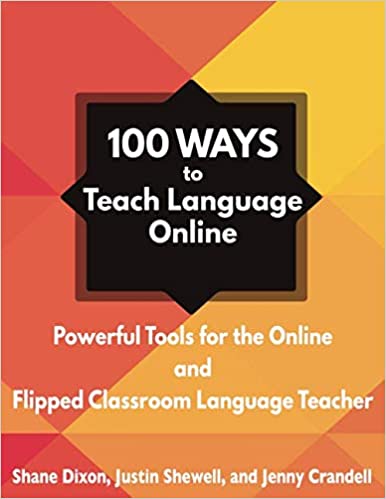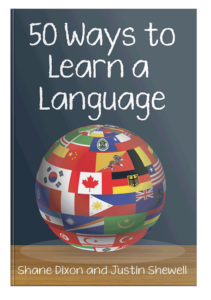
1. Know your content
There is a common myth that anyone who can speak a language can teach that language, but any experienced English teacher knows this is not true. The best teachers know more about English than simply being a native speaker. They've studied grammar and know what a noun, verb, adjective and adverb are. They understand how clauses come together to make a sentence. They've studied vocabulary and can explain how words are formed. They understand collocations and what metaphors, idioms, and lexical phrases are. They've studied pronunciation and know how various sounds are formed in the mouth. They understand the importance of intonation and stress in conveying meaning. They understand how language is used for communication.
2. Know your pedagogy
Effective language teachers not only know about English, but they also know the best teaching methods to help others learn English. They understand the difference between communicative and audio-lingual methods and which methods work best for teaching grammar and vocabulary. They understand how to teach learners of different ages and different levels. They understand how to introduce and practice new language skills with their learners. They know a variety of methods for teaching reading, writing, listening and speaking skills.
3. Know your learning outcomes
One of Stephen Covey's 7 habits of highly effective people is ""begin with the end in mind"" and this applies to teaching as well. No matter how well you know your content, and no matter what teaching methods you use, if you do not know where you want your learners to end up, they are never going to get there. Start your lesson planning with an idea of what you want your learners to accomplish. Then determine what skills and knowledge they need in order to accomplish those goals. Decide what learning activities will help your learners obtain those skills and knowledge, and incorporate those activities into your lessons.
4. Align assessments to learning outcomes
Have you ever driven a car with a bad alignment? I had an old 1967 Ford Galaxy 500 and no matter what I did, I could not get the wheels of the car to align properly. As I drove the car, it would shake slightly, and I had to replace the tires constantly because they wore out so fast. Eventually I had to get rid of the car because it wasn't practical to drive any more. Your learning activities, assessments and learning outcomes are like the wheels of a car. If they are not aligned and working together, your learners will not achieve their language goals. After you have determined your learning outcomes and decided which learning activities to include in your lessons, make sure you choose appropriate assessments that will tell you if your learners have actually accomplished what you wanted them to.
5. Be reflective
Effective language teachers know that teaching does not stop when the lesson is over. They spend time after each lesson reflecting on how the lesson went, asking themselves what went well and what could be improved. They might make some notes about what they want to change for the next lesson. Reflecting on your teaching performance and the effectiveness of your lesson design is an excellent form of professional development. As you look for ways to reflect on your teaching, you might try asking students for feedback, keeping a journal about your lessons, or even video recording yourself to watch later.
6. Remember teaching is a team sport
I remember my first real teaching job after graduating from university. I was the only ""foreigner"" teaching in a small private institute in Korea. The school had never had a foreigner as a teacher before and I had to design and teach the curriculum. I felt very alone as I struggled to come up with ideas for each lesson. I realized, however, that I was not alone. I found websites where teachers had posted lesson ideas online. I discovered other teachers working in nearby schools and asked them for ideas. When I moved to a school where I worked in a team of teachers, my colleagues were only to happy to share their ideas and lesson plans with me. Don't forget to reach out to others as you work to help your learners be successful.
7. Be innovative
As a young boy, I lived with my grandmother on what used to be a small farm in the Pacific Northwest. Back behind the house, surrounded by some ancient trees and blackberry bushes was a pond. The water in this pond came from the rain and there were no streams leading into or exiting the pond. Because the water sat there day in and day out, with no real movement, it typically developed a sometimes unpleasant smell. Some teachers are like the water in that pond, never really doing anything new in their classrooms. As you reflect on your own teaching, and find new ideas by working with colleagues, don't be afraid to try new things in your classroom. Sure, not every new idea is going to be successful on the first try, so be ready to experience some awkward moments in your classroom. But as you try new teaching methods and activities, you will open up new doors to you and your learners. You will add to your repertoire of teaching ideas and improve your teaching practice.
8. Integrate technology into your teaching
Can you imagine a world today without the Internet, smartphones, or computers? Probably not. Yet teachers create such a world everyday when they ignore technology as they try to teach language. By incorporating this technology into your teaching, you will not only motivate your learners and help them be more engaged in your teaching, but you will also open up a world where they can use what they already know to help them learn language. Chances are your learners are already bringing technology with them to class in the form of smartphones and possibly tablets. There are some great apps you can use to get students using their smartphones in class to learn language. One I use a lot is called Socrative, which is a live-polling app that lets students use their smartphones to answer questions and provide feedback that is immediately collated and sent to my device. This lets me determine what students really know and make sure every student is engaged during the lesson.
9. Remember the 80/20 rule
The 80/20 rule is simple: students should spend only about 20% of their time learning new skills, and about 80% of their time practicing what they already know. This is a rule that is commonly applied in skills-based learning, such as learning to play the piano. When I was young, I went to piano lessons one day a week, where my teacher taught me how to play new songs and increase my skill level. I spent the other days of the week practicing what I had learned. Learning a language is a lot like learning to play the piano. Students will not progress without a sufficient amount of practice. If your students are not getting enough practice time outside of class, then make sure to incorporate practice time into your lessons. You might even try a flipped model of teaching, where students watch videos and read outside of class to learn new skills, and then practice in class when they are with other people who speak the language.
10. Think outside the classroom
How many hours a day do your learners spend with you in the classroom? Wouldn't you like to have your learners spend more time practicing language? You can only do so much in the classroom. Effective language teachers understand this and search for ways to engage their learners in practicing language outside the classroom. There is a plethora of ways your learners can practice language outside the classroom. You might find a website where they can interact with native speakers of the language they are learning and encourage your learners to use that website. You might suggest they watch videos of television shows and news broadcasts in the target language to increase their listening comprehension. In this day and age of global information access, your students have many resources they can use to practice outside the classroom.
Justin Shewell is the co-designer of Teach English Now!, one of the world's largest online TESOL certificate programs.



